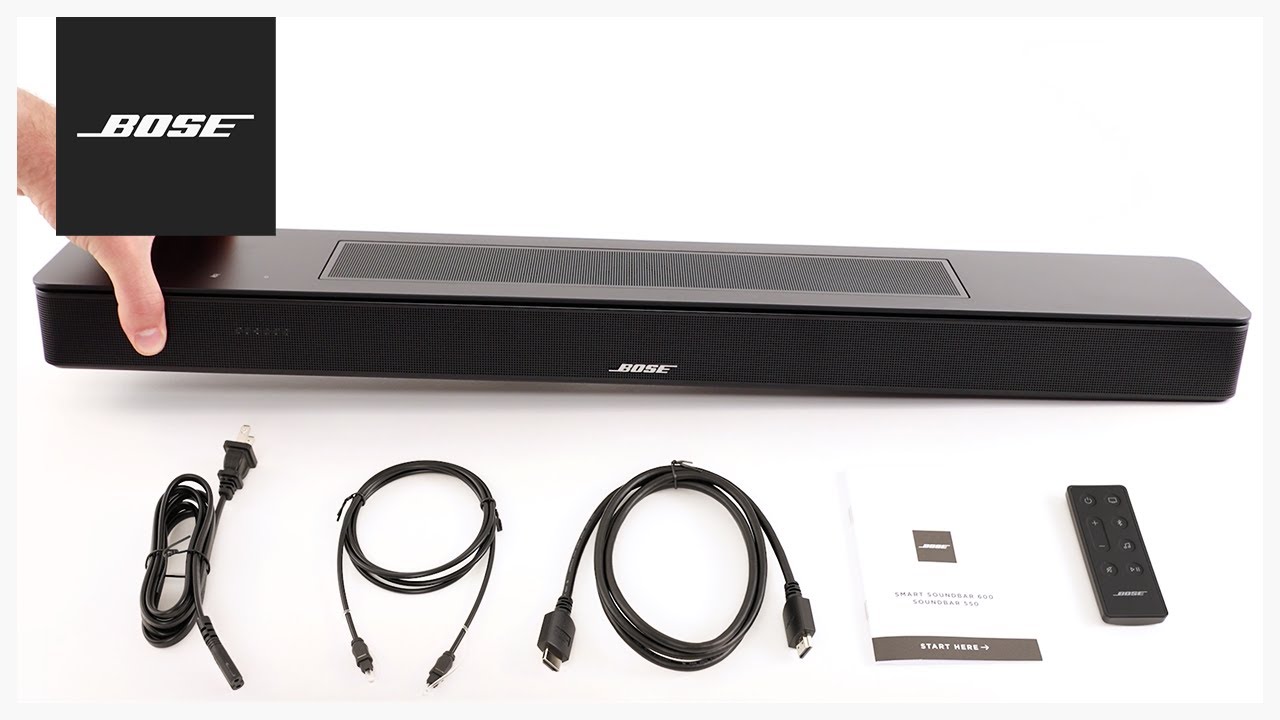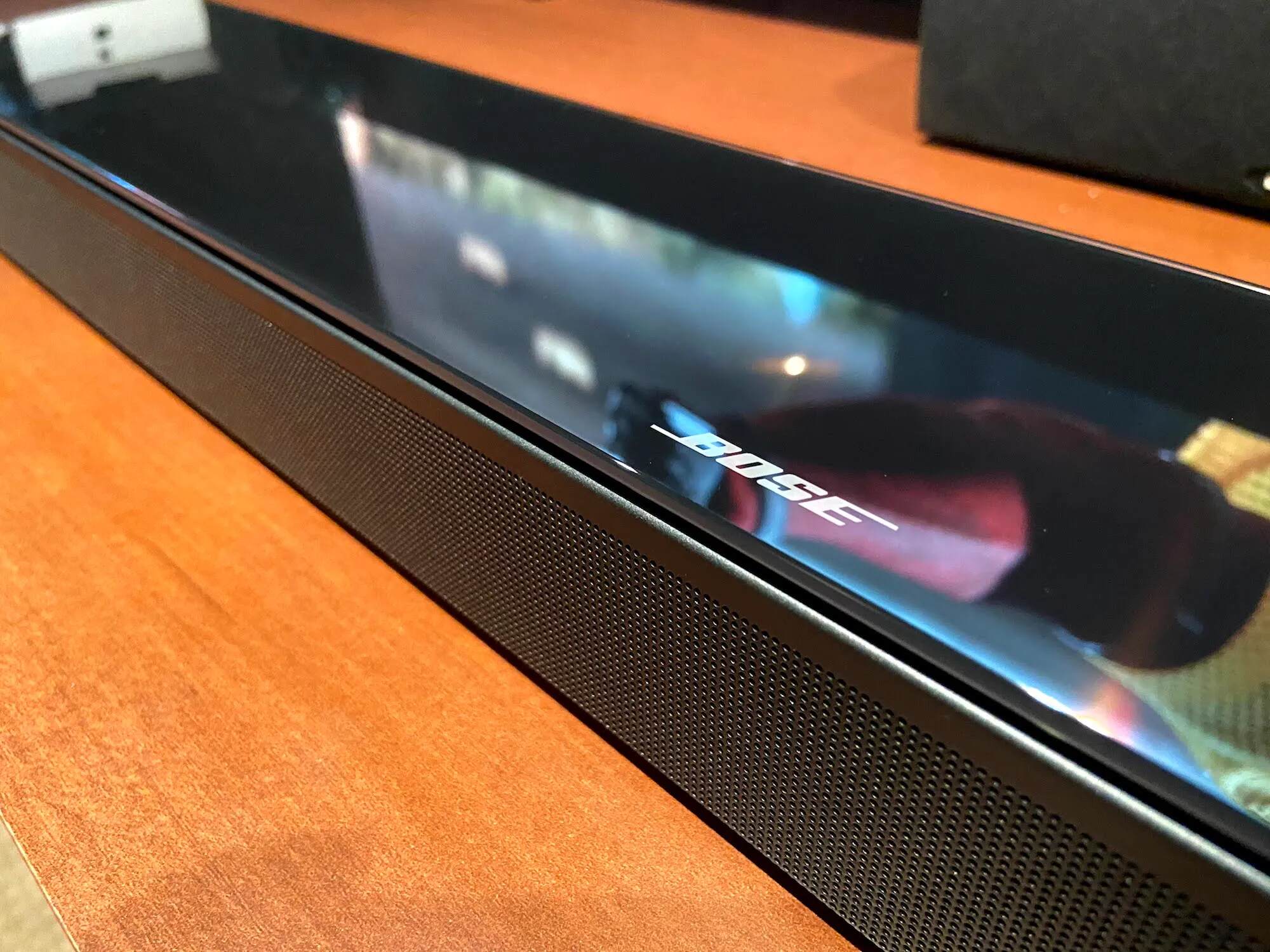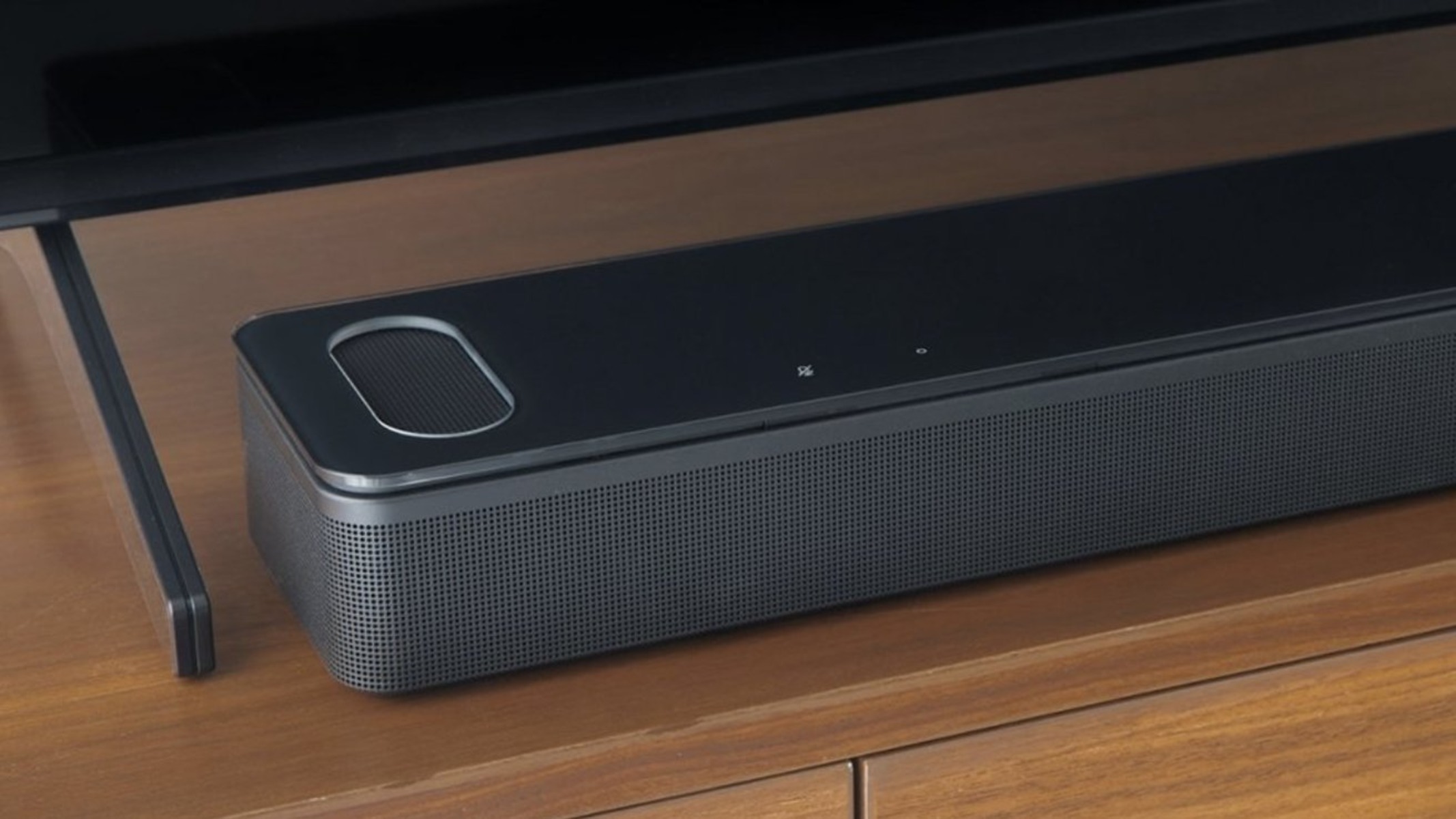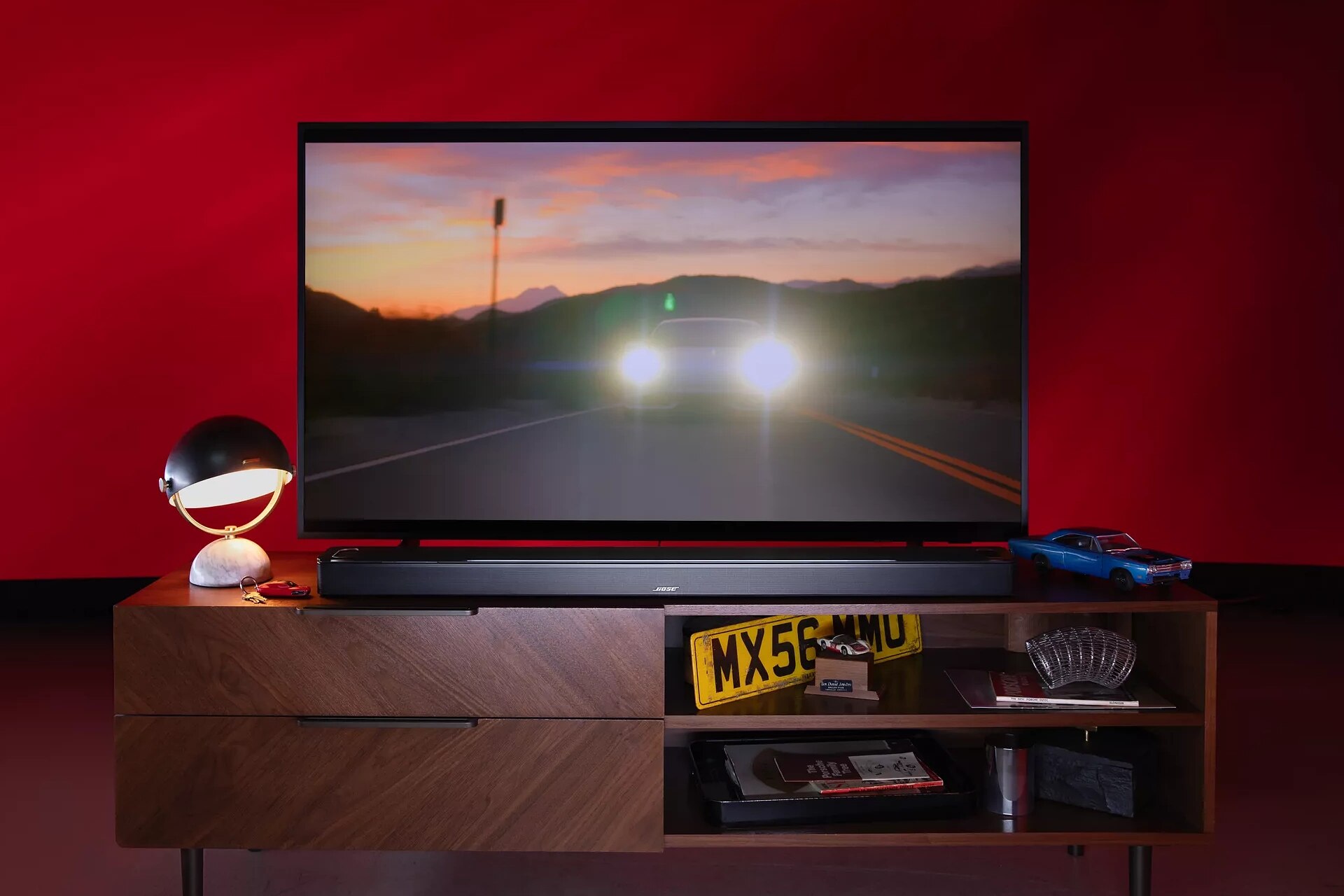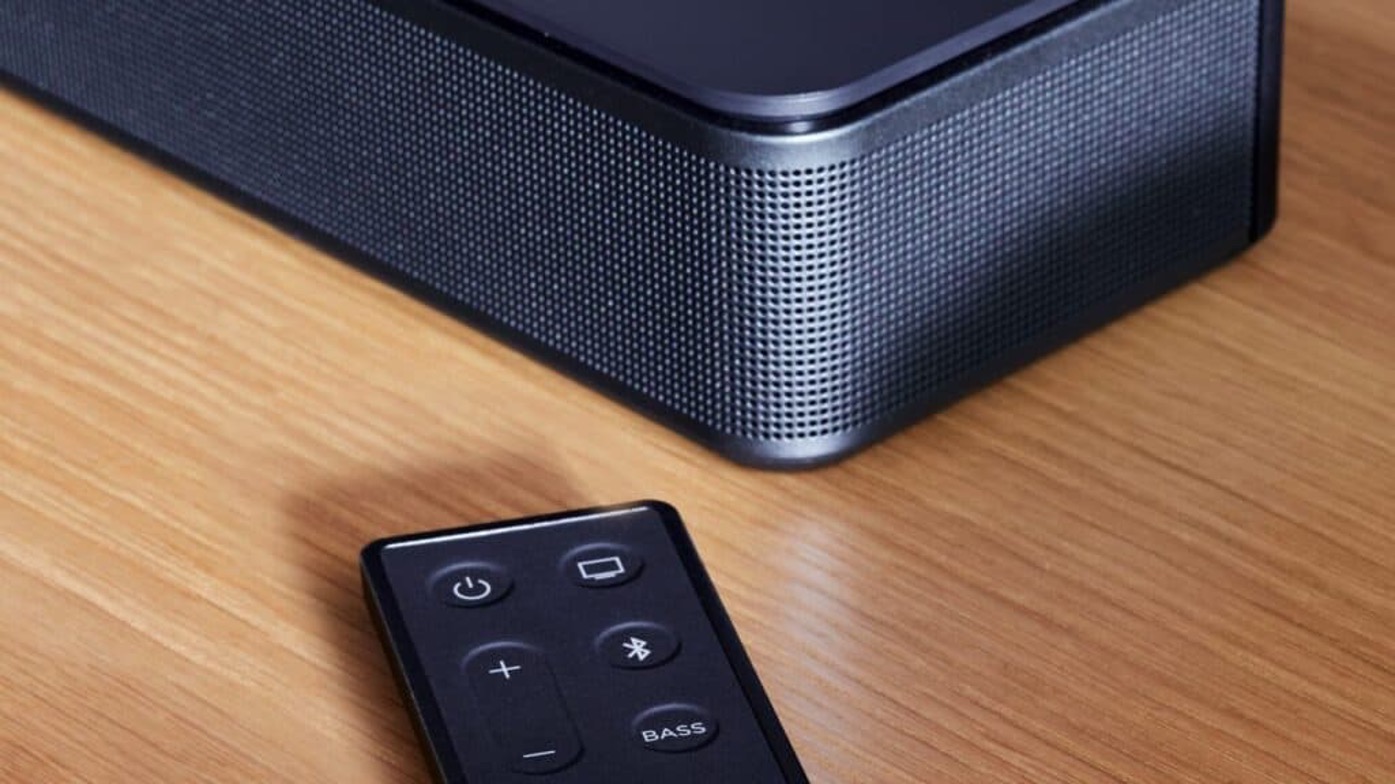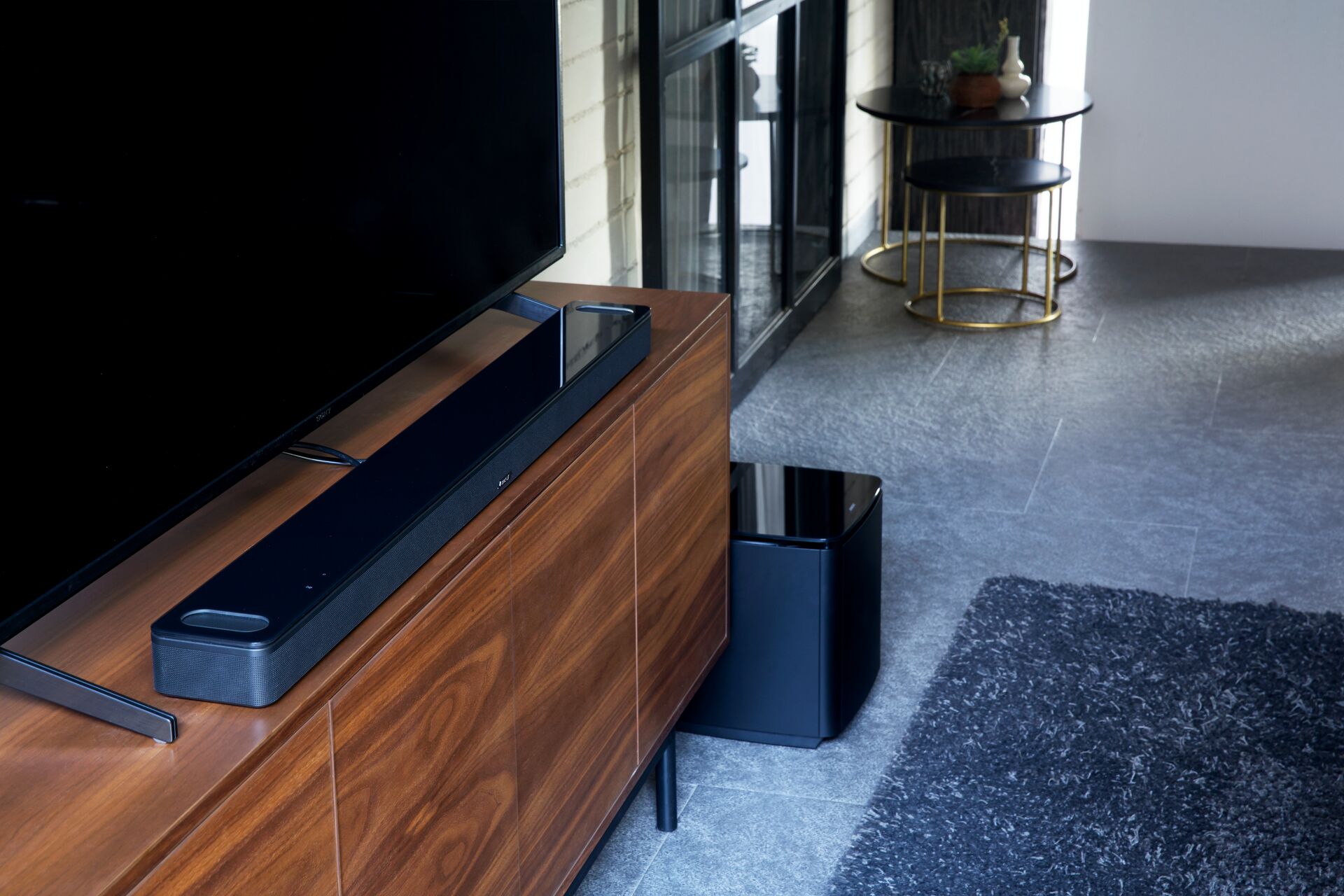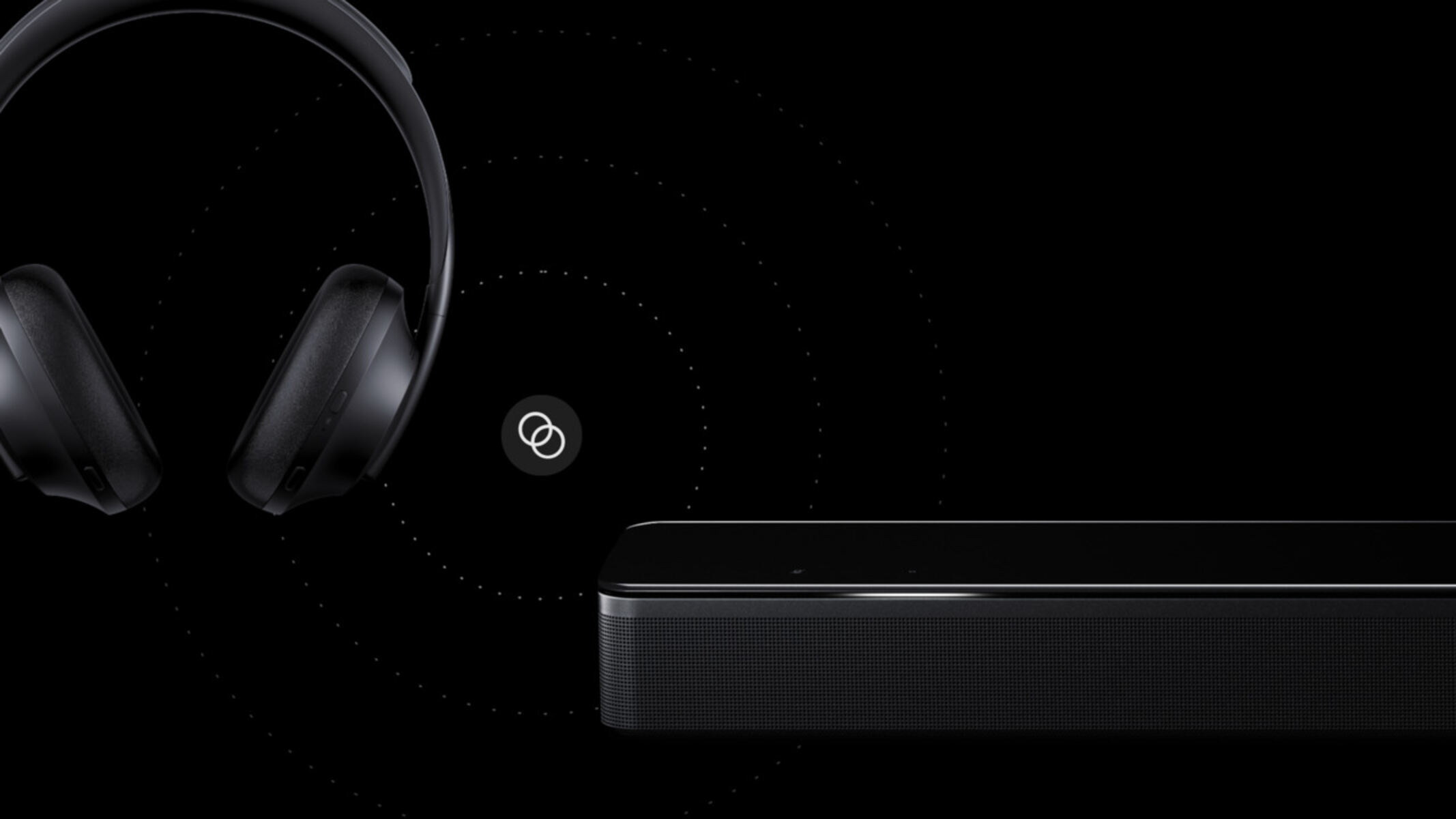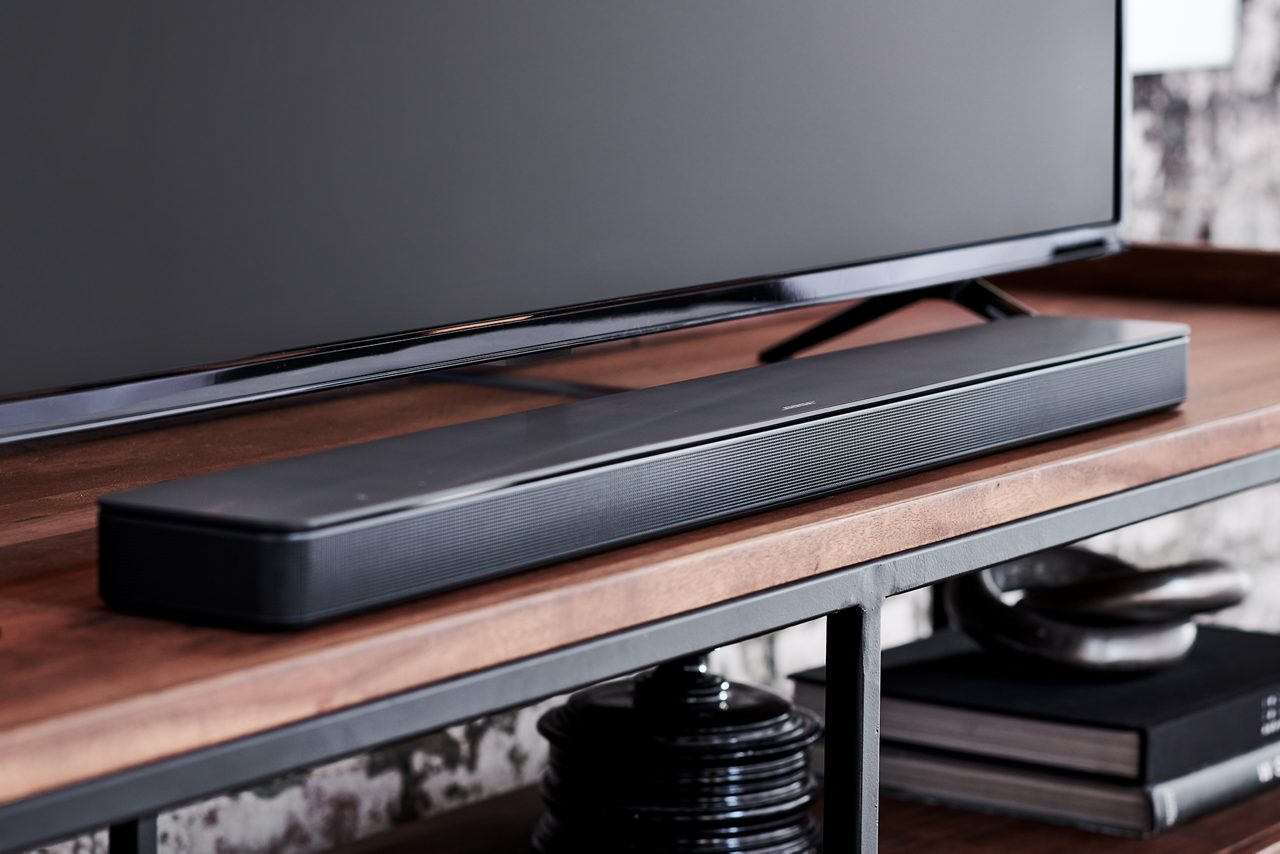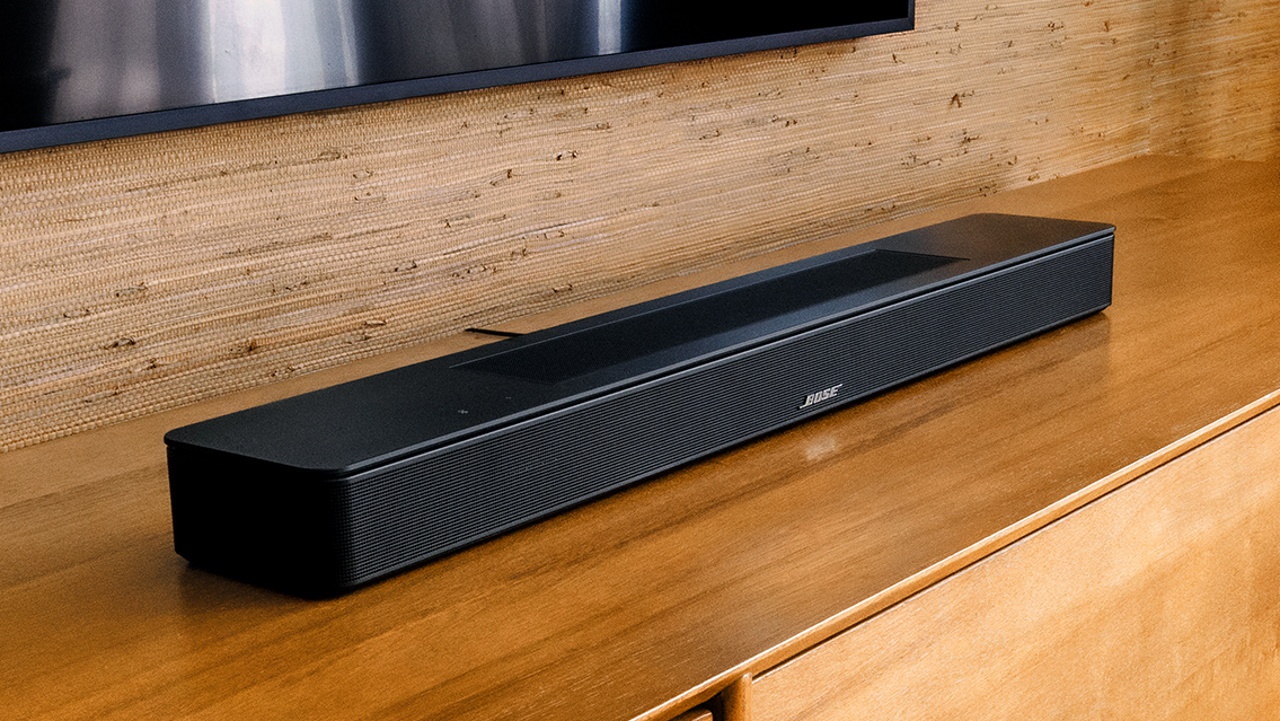Introduction
Welcome to our comprehensive guide on how to connect to a Bose Soundbar! Bose Soundbars are sophisticated audio devices that can significantly enhance your home theater experience. Whether you’re a music enthusiast or a movie lover, connecting to a Bose Soundbar allows you to enjoy immersive sound quality and a seamless audio experience.
In this article, we will walk you through the process of connecting to a Bose Soundbar, covering everything from understanding the device to troubleshooting common connection issues. Whether you have a Bose Soundbar 500, Soundbar 700, or any other model, these steps will help you establish a connection and start enjoying high-quality audio in no time.
To successfully connect to your Bose Soundbar, you’ll need to gather a few essential equipment and familiarize yourself with the different connection options available. Depending on your preferences and existing audio setup, you can connect the soundbar via physical cables or go wireless using Bluetooth or Wi-Fi. Our step-by-step instructions will guide you through each method, ensuring a smooth setup process.
However, as with any electronic device, you might encounter some connectivity issues along the way. Fear not! We’ll also provide troubleshooting tips to help you overcome any obstacles that may arise. By following our instructions and troubleshooting advice, you’ll be able to connect to your Bose Soundbar and enjoy an exceptional audio experience right in your own home.
So, let’s get started! Whether you’re a tech-savvy individual or a beginner, this guide will equip you with the knowledge and confidence to connect to your Bose Soundbar and elevate your entertainment experience.
Understanding the Bose Soundbar
Before delving into the process of connecting to a Bose Soundbar, it’s important to have a basic understanding of this remarkable audio device. Bose Soundbars are designed to deliver premium sound quality and create a cinematic experience right in your living room.
The Bose Soundbar comes in various models, each offering unique features and specifications to cater to different audio preferences. With sleek designs and advanced technology, these soundbars are not only capable of producing immersive sound but also blend seamlessly with your home theater setup.
One of the standout features of Bose Soundbars is the powerful audio performance. They are equipped with custom-designed speakers and built-in amplifiers that provide detailed sound reproduction across various frequency ranges. This ensures that you can enjoy clear dialogue, crisp highs, and impactful lows, allowing you to fully immerse yourself in your favorite movies, music, and games.
Bose Soundbars are also equipped with advanced sound enhancement technologies, such as Bose Acoustic Mass Module technology and Bose PhaseGuide technology. These technologies help to create a lifelike soundstage, making you feel like you’re right in the middle of the action.
In terms of connectivity options, Bose Soundbars offer a range of choices to suit your preferences. They typically come with multiple input ports, allowing you to connect various devices such as TVs, gaming consoles, and media players. Additionally, many Bose Soundbars also support wireless connectivity, enabling you to stream audio directly from your smartphones, tablets, or computers.
When it comes to controlling the soundbar, Bose provides user-friendly remote controls that enable you to adjust the volume, switch inputs, and navigate through settings effortlessly. Some models also offer compatibility with voice assistants like Amazon Alexa or Google Assistant, allowing you to control the soundbar with simple voice commands.
Now that you have a better understanding of the Bose Soundbar’s features and capabilities, let’s dive into the next section to gather the necessary equipment for the connection process.
Gathering the Required Equipment
Before you can connect to your Bose Soundbar, it’s essential to gather all the necessary equipment. The exact equipment you need may vary depending on the specific model of your Bose Soundbar and your desired connection method. Here are some common items you may need:
- Bose Soundbar: Of course, the first item you need is the Bose Soundbar itself. Ensure that you have the correct model and that it is in proper working condition.
- Power Cable: Most Bose Soundbars come with a power cable that you will need to connect to a power source. Make sure you have the appropriate power cable for your region.
- HDMI Cable: If you plan to connect your Bose Soundbar using a physical connection, an HDMI cable is typically required. Choose a high-quality HDMI cable that supports the necessary bandwidth for audio and video transmission.
- Optical Cable: Alternatively, for some older TV models, you may need an optical cable to establish a connection between the soundbar and the TV. Check the specifications of your TV and soundbar to determine if this is necessary.
- Bluetooth or Wi-Fi: If you prefer a wireless connection, ensure that your Bose Soundbar supports Bluetooth or Wi-Fi connectivity. You will need a compatible device, such as a smartphone or tablet, to connect wirelessly.
Double-check the documentation or user manual that came with your Bose Soundbar to confirm the specific equipment required for the setup. It’s always a good idea to have any necessary cables or adapters ready before you begin the connection process.
It’s worth noting that some Bose Soundbars come with additional accessories or optional equipment that can enhance the audio experience. These may include subwoofers, surround speakers, or wall-mounting kits. While these are not essential for establishing a basic connection, you may consider adding them to your setup to create a more immersive audio environment.
Now that you have gathered the necessary equipment, it’s time to move on to the next section, where we will guide you through the process of establishing a physical connection to your Bose Soundbar.
Establishing a Physical Connection
If you prefer a wired connection, you can establish a physical connection between your Bose Soundbar and your audio source device, typically a television or media player. Here is a step-by-step guide to help you with the process:
- Identify the HDMI or optical input on your Bose Soundbar. Typically, the HDMI or optical ports are located at the back of the soundbar.
- Connect one end of the HDMI or optical cable to the corresponding port on your Bose Soundbar.
- Locate the HDMI or optical output on your audio source device, such as your TV or media player.
- Connect the other end of the HDMI or optical cable to the HDMI or optical output on your audio source device.
- Ensure that your audio source device is set to output audio through the HDMI or optical connection. You may need to adjust the audio settings on your TV or media player accordingly.
- Plug in the power cable of your Bose Soundbar and turn it on.
- Use the remote control provided with your Bose Soundbar to select the appropriate input source. For example, if you connected the soundbar to the HDMI 1 port, select HDMI 1 as the input source.
Once the physical connection is established and the input source is selected, you should be able to enjoy audio playback through your Bose Soundbar. Adjust the volume and other settings using the remote control or any integrated controls on the soundbar itself.
If you encounter any issues with the connection, double-check the cable connections, ensure that the audio source device is properly configured, and consult the user manual or support documentation provided by Bose for further troubleshooting steps.
Now that you have successfully established a physical connection, let’s explore how to connect to your Bose Soundbar wirelessly using Bluetooth or Wi-Fi in the next section.
Connecting via Bluetooth or Wi-Fi
If you prefer a wireless connection to your Bose Soundbar, you can utilize either the Bluetooth or Wi-Fi capabilities of the device. Here’s a step-by-step guide on how to connect via Bluetooth or Wi-Fi:
Bluetooth Connection:
- Make sure that both your Bose Soundbar and the device you want to connect (e.g., smartphone, tablet, or computer) have Bluetooth functionality enabled.
- On your Bose Soundbar, access the Bluetooth settings by pressing the Bluetooth button on the remote control or navigating through the soundbar’s menu options.
- On your device, navigate to the Bluetooth settings and search for available devices.
- Select your Bose Soundbar from the list of detected devices to initiate the pairing process.
- Follow any on-screen prompts or input any necessary codes to complete the pairing process.
- Once connected, you should be able to stream audio from your device to the Bose Soundbar via Bluetooth. Use your device’s media player or streaming apps to play audio, and adjust the volume using the controls on your device or the Bose Soundbar.
Wi-Fi Connection:
- Ensure that your Bose Soundbar is connected to a power source and turned on.
- Download and install the official Bose SoundTouch app on your smartphone, which is available for iOS and Android devices.
- Open the SoundTouch app and follow the on-screen instructions to set up your Bose Soundbar and connect it to your Wi-Fi network. The app will guide you through the necessary steps, such as selecting your Wi-Fi network and entering the password.
- Once the Wi-Fi connection is established, you can use the SoundTouch app to control your Bose Soundbar, play audio from streaming services, and access other advanced settings.
By connecting your Bose Soundbar via Bluetooth or Wi-Fi, you can enjoy wireless audio streaming from various devices and take advantage of convenient control options.
If you encounter any difficulties during the Bluetooth or Wi-Fi connection process, refer to the user manual or online support resources provided by Bose for troubleshooting assistance.
Next, let’s discuss some common connection issues you may encounter and how to troubleshoot them effectively.
Troubleshooting Connection Issues
While connecting to a Bose Soundbar is generally a straightforward process, you might encounter some connectivity issues along the way. Here are some common problems you may face and the corresponding troubleshooting steps:
No Sound or Poor Audio Quality:
If you’re not getting any sound or experiencing poor audio quality:
- Check the volume settings on your audio source device and ensure it’s not muted or set to a low volume.
- Verify that the cables are securely connected. Loose or faulty connections can result in sound issues.
- Ensure that the Bose Soundbar is selected as the correct audio output device on your TV or audio source.
- Adjust the sound settings on your Bose Soundbar, such as bass and treble levels, to optimize the audio output according to your preferences.
Intermittent or Dropped Bluetooth Connection:
If you’re experiencing intermittent or dropped Bluetooth connections:
- Bring your device closer to the Bose Soundbar to ensure a stronger Bluetooth connection. Obstructions and distance can affect the signal strength.
- Make sure there are no other devices interfering with the Bluetooth connection, such as other nearby devices paired with the soundbar.
- Check that the Bluetooth firmware on both your Bose Soundbar and your device is up to date. Visit the Bose website for any available firmware updates.
Wi-Fi Connection Issues:
If you’re having trouble connecting your Bose Soundbar to your Wi-Fi network:
- Ensure that your Wi-Fi network is functioning properly, and its signal strength is strong enough for the soundbar to connect to.
- Double-check that you’ve entered the correct Wi-Fi network name and password during the setup process.
- Restart your Wi-Fi router and the Bose Soundbar. Sometimes, a simple reboot can resolve connectivity issues.
- If all else fails, reset the Bose Soundbar to its factory settings and repeat the setup process from scratch.
If you still cannot resolve the connection issues, it’s recommended to reach out to Bose customer support for further assistance. They will have the expertise to guide you through specific troubleshooting steps based on your specific model and situation.
Now that we have addressed some common connection problems, let’s explore ways to enhance your overall soundbar experience in the final section.
Enhancing the Soundbar Experience
Now that you have successfully connected to your Bose Soundbar, let’s explore some additional tips to further enhance your audio experience:
Optimal Placement:
Proper placement of your Bose Soundbar can greatly impact sound quality. Ensure that it is positioned correctly, ideally centered beneath your TV or mounted on the wall at ear level. Avoid placing the soundbar in enclosed spaces or obstructing it with other objects to allow for optimal sound dispersal.
Subwoofer Integration:
If your Bose Soundbar has a compatible subwoofer, consider connecting it for deeper bass response. The subwoofer can add richness and depth to your audio playback, especially during action-packed movie scenes or when listening to music with heavy basslines.
Surround Sound Setup:
To create a more immersive audio environment, you can expand your sound system by adding Bose surround speakers. These speakers help to create a surround sound experience, enveloping you in audio from all directions. Consult the user manual or Bose’s official website for compatibility and setup instructions.
Room Acoustics:
Take into account the acoustics of your room when optimizing your soundbar experience. Consider adding acoustic panels or diffusers to minimize sound reflections and improve sound clarity.
Equalizer Settings:
Experiment with the equalizer settings on your Bose Soundbar to fine-tune the audio to your preferences. Adjust the balance between bass, midrange, and treble frequencies to achieve the desired sound signature for different types of content.
Regular Updates:
Keep your Bose Soundbar firmware and any associated apps up to date. Manufacturers often release updates that improve performance, fix bugs, and introduce new features. Check for updates periodically to ensure you’re getting the best soundbar experience possible.
By implementing these tips and exploring the various features and settings of your Bose Soundbar, you can truly enhance your audio experience and enjoy immersive, high-quality sound.
With this, you’re now equipped with the knowledge and steps to connect to your Bose Soundbar and get the most out of your home theater setup. Whether you’re enjoying movies, streaming music, or playing games, you can immerse yourself in a rich audio experience that enhances your entertainment moments.







